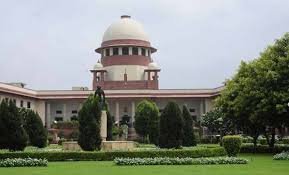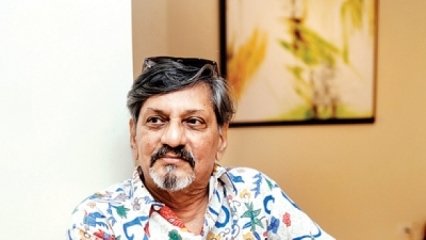Actor-director Amol Palekar has walked the talk. The Indian film industry’s fracas with the Central Board of Film Certification (CBFC) is not new and it’s certainly not limited to a certain Mr Nihalani. One of the biggest blockbusters of Indian cinema, Sholay, was refused screening certificate by the CBFC too.
Which is why, Amol Palekar’s writ petition challenging India’s censorship laws in the Supreme Court, is being seen as a landmark step. These laws, Palekar claims, have not updated in the last 47 years and have failed to keep up with the times.

In an email interview with ScoopWhoop News, Palekar tells us why it’s time to redefine these laws.
Why are our CBFC laws so redundant?
In 1970, a five-judge bench of the Supreme Court ruled that cinematographic films in theaters were the most influential media of mass communication affecting the social mind and therefore, exercise of censorship under the said Act was valid and necessary. The social situation based on which the said decision was given is changed drastically to such an extent that the decision needs to be overruled by a larger bench of the Supreme Court.
Today modern technology makes dissemination of information available in real time through a variety of media, many of which are either not regulated or if regulated, not subjected to pre-censorship. From 1980, we had Doordarshan as the only public service broadcaster. Now we have more than 800 registered television channels along with 1000s of local cable channels.

You also demand the recommendations of the Shyam Benegal Committee be put in use. The Committee in 2016 suggested that CBFC should only be a film certification body whose scope should be restricted to categorizing the suitability of the film to audience groups on the basis of age and maturity. Wasn’t that the main function of CBFC anyway? How and when did CBFC became censor board?
Since the Supreme Court decision in 1970 [in the KA Abbas case], the power of certification as a means of pre-censorship has been subjected to large-scale abuse owing to ambiguity and lack of clear guidelines of how the power is to be exercised. As a result, the CBFC routinely demands cuts of scenes or dialogues failing which denies certificates to films for arbitrary reasons.
You demand that documentary films be removed from the purview of censorship altogether.
Documentaries which are factual depictions of real life events are closer to news reports than fiction films. If broadcast of news, investigative reports are presented on television and internet without any pre-censorship, subjection of documentaries to pre-censorship amounts to discriminatory treatment of similar entities which is violative of our fundamental rights ensured by Article 14, Art 19(1)(a), and Art 21 of our Constitution.
As an artist, do you feel stifled today?
In India, speech-based offences are cognizable that means a police officer has the authority to make an arrest without a warrant and to commence an investigation without the prior permission of the court. Thus the burden of approaching the courts is not on the Police/State but on the citizens. So the citizen-victim suffers double jeopardy – her/his right is curtailed plus she/he has to chase the judiciary!!!
Should even the judiciary have a right to judge the artistic content of a work of art? In a scenario where the fence itself eats the crop, whom should the artistes and the audience approach?

















